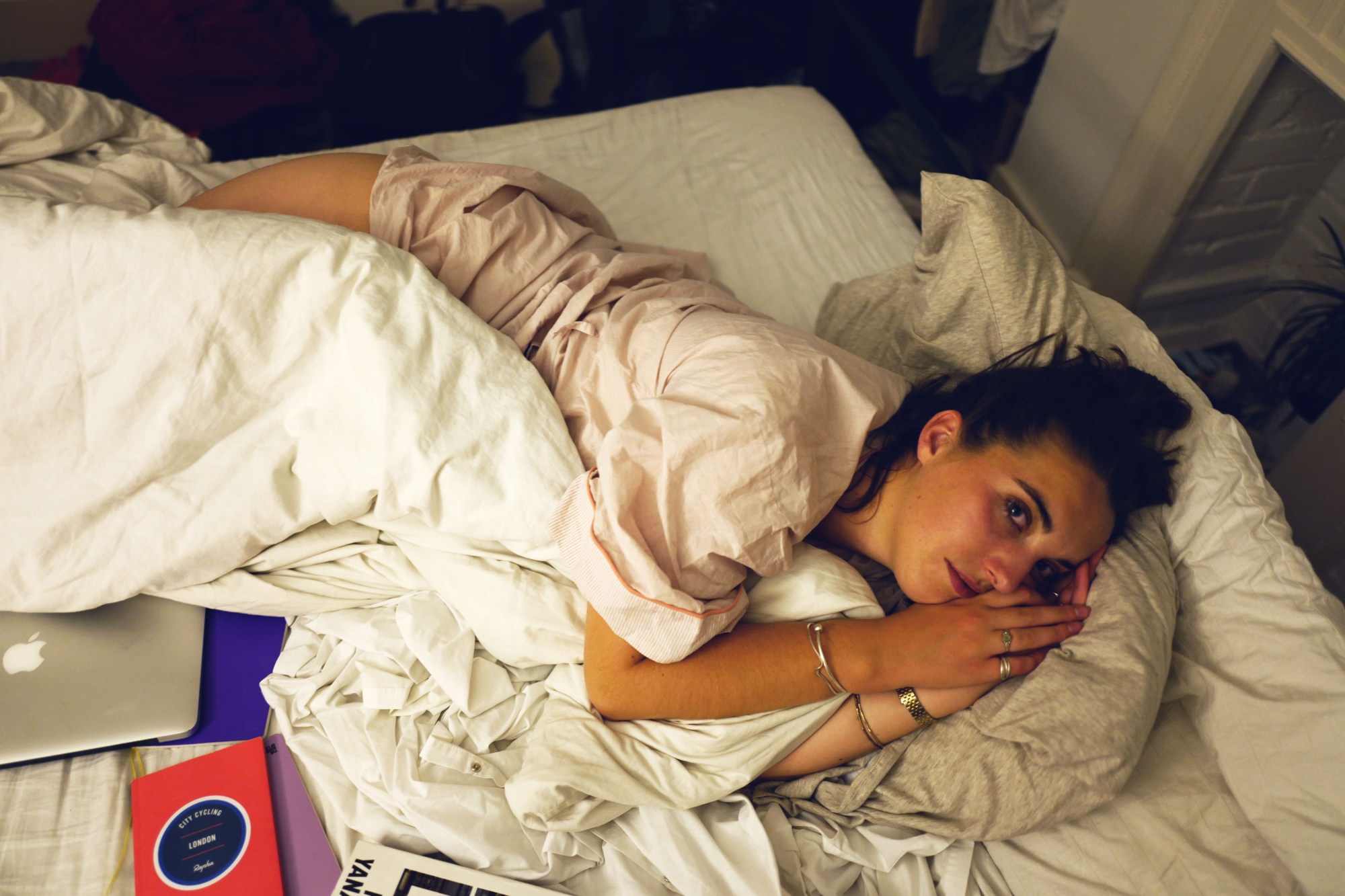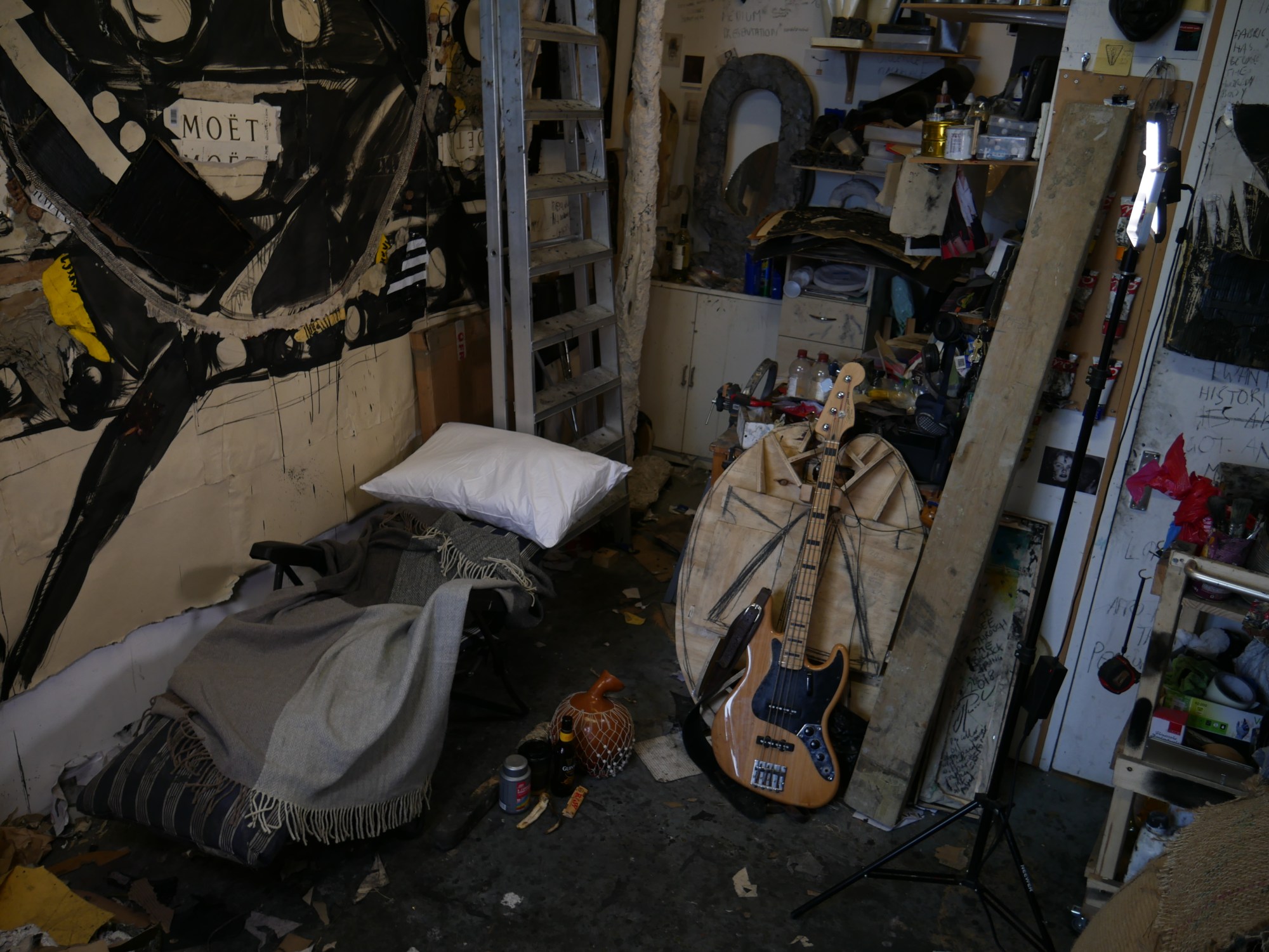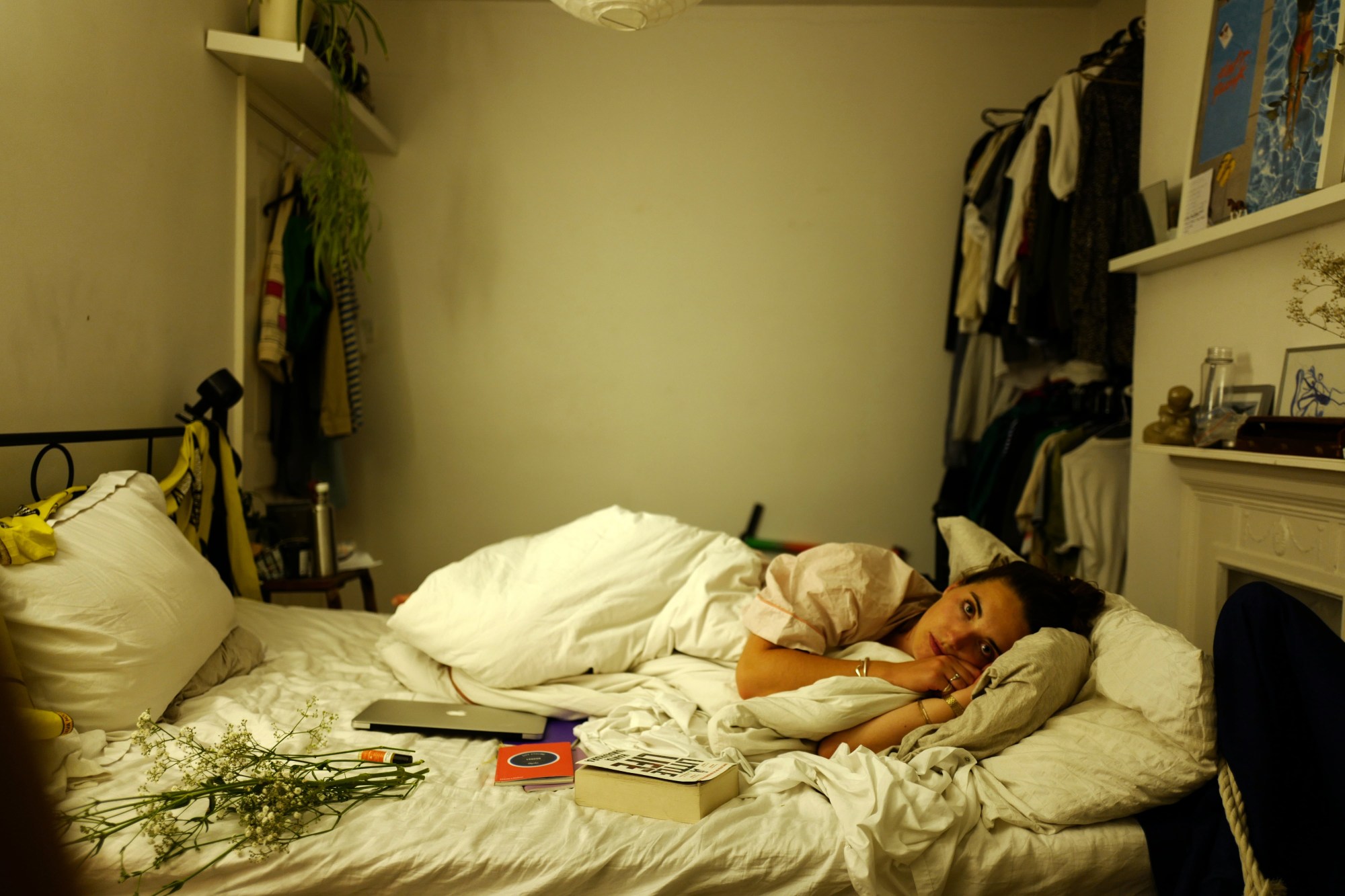Twenty years ago this month, Tracey Emin crafted her most iconic piece: My Bed. Following a four day bender of bed-bound boozing, she finally surfaced to see her creation for the first time, from its condoms and bloody underwear to crumpled newspapers and bedsheets. “I got up and then fell over, and crawled to the kitchen and managed to get some tap water,” she said on the Southbank Show in 2001: “When I looked at the room I thought…it was disgusting… but then when I looked again… it became something incredibly beautiful.”
It was this bleary-eyed gestalt shift in vision — looking at the bed at a second glance — that turned the squalid into the sublime. Playfully, it was an unmade readymade, confronting critics and Tate visitors with the same opportunity to see something so banal as something beautiful. It followed the provocative, conceptual objects that the Young British Artists thrived on, from Hirst’s shark to Landy’s wheelbarrow. Some saw it as fucked-up, others were fucked-off and for the more progressive it was fucking genius.
Its defining feature, though, was its absoluteness. In the same Southbank talk, Emin says she was ‘drinking like an absolute fish’ and was ‘absolutely paralytically drunk’. Fittingly, too, the cause of this was Absolut vodka, its bottles strewn next to her bed. Similarly, she described seeing it as a piece of art as it turning into something ‘that’s closed, that’s finished’. It became something definite and separate from herself. It was unfiltered and emphasised, absolutely.
Although she could never separate herself from it completely. It’s still always My Bed, stamped with Emin’s mark no matter how many hands of galleries, dealers, delivery companies and prying punters it may touch, or be touched by. That’s the beauty of all our beds, after all: they are something personal, a private space where we conceive of new ideas, conceive new children, fuck, wank, lay ill, break-down, wake-up, are born and maybe even die. And Emin made her private space public.
To follow on from Emin, twenty years later, we got in touch with five of the most exciting young British artists of this generation. Asking them to photograph their own bed and discuss the importance of their living space in their work and play, we’re able to give you a chance to enter their bedrooms.
Anya Hassett
London artist, currently working on a sculpture project exploring domestic furniture.

“Emin’s work had a huge influence on me whilst I was finding my feet as an artist. Her honesty empowered me, and continues to shape the way that I approach my own work. Through My Bed, I was encouraged to put more of the self in to the art. For me, it makes each piece significant as it documents personal milestones and captures my reality, which is that making art is therapy.”
“I live with my boyfriend and a friend in south London; we are blessed with space so I can often use the front living room as a kind of home studio, which means our room can be a work-free space for the two of us to share. I have spent a lot of time working from my bed (there have been times that I couldn’t be anywhere else), and I was my in my comfort zone so the art seemed most raw. I’m currently trying to establish this separation between the work and the personal – so that one doesn’t take anything away from the other. The real challenge came when the space wasn’t just mine; my boyfriend is an illustrator so we make a conscious effort to respect our bedroom, keeping it as chaos-free as possible.”
“I always struggle to maintain distance between studio and domestic life when a project takes over. Admittedly, this is great at the moment as I am collaborating with artist Martha Scott on a sculptural project, which explores the boundaries of domestic furniture.”
Georgia Lucas-Going, b.1998
Born in Luton in but based in London, Lucas-Going explores race and the media via performance and sculpture.

“For years my bedroom has always been my creative space. You work with what you’ve got and renting a studio and living in London is not accessible for most. My bed is where I try and forget everything or over think everything. It’s the place of excess/despair/joy — I always draw the line on eating in bed though, I don’t fuck with that. With the controversy that came along with the bed, the comments of ‘I could of done that’ and her response ‘but you didn’t’ was 100% valid.”
“Contemporary art is always the first in the firing line. It’s all in the context. I remember being gifted Emin’s biography on my 17th birthday and I was into it and how My Bed changed the art world. I just wish she wasn’t a Tory.”
Tanoa Sasraku-Ansah, b.1995
British-Ghanian artist examining her dual identity and experience as a young, queer woman.

“My Bed was the epitome of contemporary art when I was beginning my art education in Plymouth and I never heard it spoken about other than from a point of scorn. Then I saw it at the Tate Britain in 2015. I was definitely struck by the nuance, particularly the Polaroid of Emin, that laid beside the bed – that always sticks in my mind when I think of this work. To confront oneself via self-portrait on a dirty nightstand, in the midst of a mental undoing in which you are losing sight of yourself is an interesting notion to me, quite jarring.”
“I currently live in a cabin at the bottom of my Uncle’s garden in north London. This space is creative to me in the sense that I think a lot here, about my practice, about people I fancy, about how I can put together a strong outfit. I also tattoo myself in the cabin, which is a favourite past time when I decide that I want to wake up a little changed.”
Irvin Pascal, b.1987
Brighton-based artist creating striking sculptures exploring race and masculinity.

“Here is the object I call ‘my bed’. I am the sole user of ‘my bed’, it belongs to me. It takes its position in my creative space when I choose for it to become ‘my bed’. I use ‘my bed’ to snooze for up to 30 minutes, or to visualise my goals. I spend most of my active life in my studio, therefore it must function in a way that allows it to support my existence. ‘My bed’ becomes an essential component of the machine I use to create in.”
“Tracey Emin’s installation My Bed is one of the most intimate and important works made by any artist in the 20th century. In the work she takes ownership of her own personal narratives and elevates them into a state of excellence. Emin has demonstrated that our darkest truths can be celebrated and brought to the forefront, which becomes an act that promotes one’s freedom.”
Liam Fallon, b. 1995
Focusing on queer culture through blocky, colourful installations and sculptures.

“For as long as I can remember, I was always fascinated by Tracey Emin’s My Bed, but I could never quite determine what aspect intrigued me. I was sure that a little bit of life experience would provide a window into understanding it and recently I got that chance. Occasionally, someone comes into your life and for a limited amount of time, your living space is transformed into more than just a living space.”
“Alain De Botton wrote in the Architecture of Happiness that these living spaces provide physical and psychological sanctuary and, in these moments, where you share your living space with someone who has such huge but temporary value to you, they bear witness to monumental elements of life.”
“For me, that is quintessentially what Tracey Emin’s My Bed does; it provides a snapshot and an opportunity to reflect on a million memories and it is that reason alone to why I believe it is one of the most relatable and monumental pieces of work today.”
